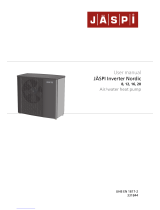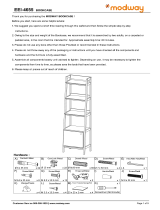
General ventilation connection
Ventilation installation must be carried out in accordance
with current norms and directives.
To prevent fan noise being transferred to the ventilation
devices, it may be a good idea to install a silencer in the
duct system. This is especially important if there are
ventilation devices in noise sensitive rooms.
Connections must be made via flexible hoses, which
should be installed so that they are easy to replace. The
extract air duct must be provided with diffusion-tight
insulation (PE30) over its entire length. Ensure that the
condensation insulation is sealed at any joints and/or at
lead-in nipples, silencers, roof cowls or similar. Provision
must be made for inspection and cleaning of the duct.
Make sure that there are no reductions of cross-sectional
area in the form of creases, tight bends etc., since this
will reduce the ventilation capacity. The air duct system
must be a minimum of air tightness class B. The extract
air duct must be a maximum of 20 m long with a maxim-
um of six bends. The ventilation ducts should be installed
in such a way that it is easy to open the inverter box. The
extract air duct should, if possible, be routed up through
the roof. If the duct is to be routed out through an ex-
ternal wall, avoid having a 90 degree bend backward,
as this can cause noise and poorer capacity.
NOTE
F750 has a very low extract air temperature. To
avoid damaging the product and/or the house,
it is therefore important that the extract air
ducts are insulated with diffusion-proof material
(PE30) along their entire length.
TIP
If additional condensation insulation (PE30) di-
mension Ø 200 is installed on the outside of the
existing exhaust line between the heat pump
and the inner roof, the noise in the installation
area is reduced by 1-2 dB(A).
Exhaust air duct /kitchen fan
Exhaust air duct (kitchen fan) must not be connected to
F750.
To prevent food vapour being transferred to F750 the
distance between the kitchen fan and the exhaust air
device must be considered. The distance should not be
less than 1.5 m, but this can vary between different in-
stallations.
Always use a kitchen fan when cooking.
NOTE
A duct in a masonry chimney stack must not be
used for extract air.
120
40
600
615
200
60
110
35
2075
440
25-50
370
350
440
180
Ventilation flow
Connect F750 so that all exhaust air except kitchen duct
air (kitchen fan) passes the evaporator (EP1) in the heat
pump. The lowest ventilation flow must comply with the
applicable national standards. For optimum heat pump
performance, the ventilation flow should not be less
than 31 l/s (110 m³/h).
Ensure that the ventilation openings are not blocked.
Set the ventilation capacity in the heat pump's menu
system (menu 5.1.5).
If the exhaust air temperature falls below 16 °C, the
compressor is blocked and electric additional heat is
permitted. Heat is not recovered from the exhaust air
when the compressor is blocked.
Adjusting ventilation
To obtain the necessary air exchange in every room of
the house, the exhaust air devices must be correctly po-
sitioned and adjusted and the fan in the heat pump ad-
justed.
Immediately after installation adjust the ventilation so
that it is set according to the projected value of the
house.
Incorrect ventilation adjustment may lead to reduced
installation efficiency and thus poorer operating eco-
nomy, and may result in moisture damage to the house.
19Chapter 4 | Pipe and ventilation connectionsNIBE F750
























